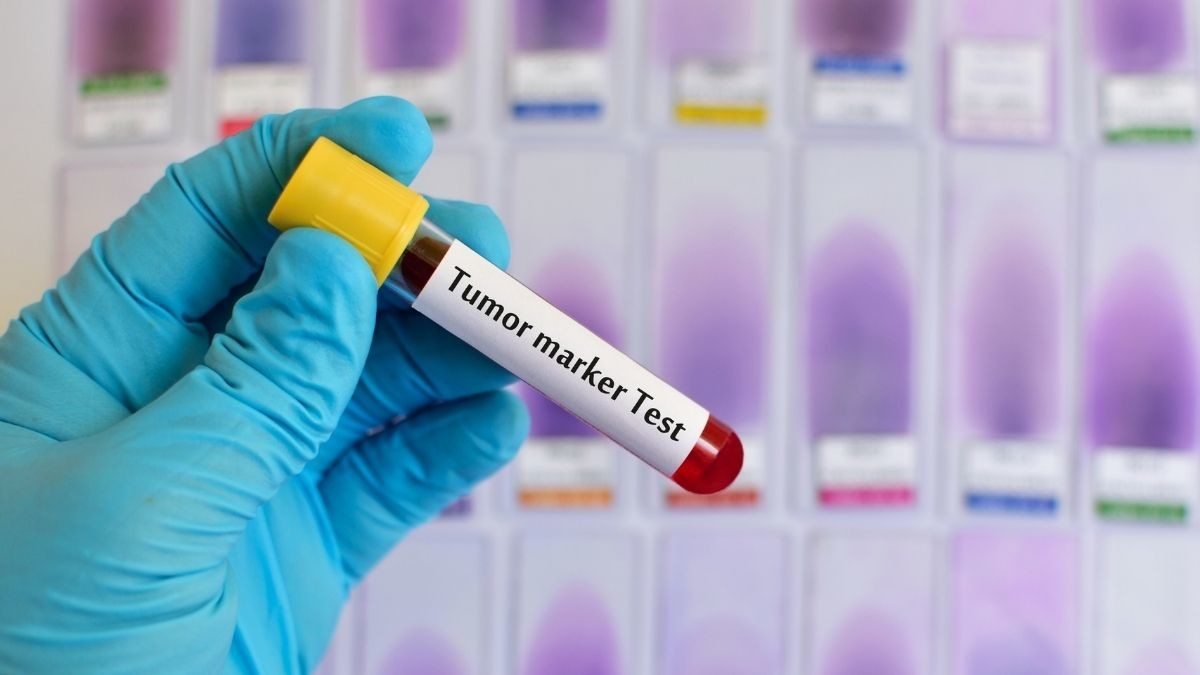Tumor markers are molecules or substances found in higher concentrations in the blood, urine, or other tissues of people with cancers. Tumor markers are also known as biomarkers, and they help indicate cancer presence. These markers can be proteins, genes, hormones, enzymes, or other molecules. These markers can be produced by the cancer cells or the healthy cells in the body in response to cancer. While tumor markers are not diagnostic of cancer in isolation, they play an essential role in cancer detection, diagnosis, treatment monitoring, and prognosis.

In this article, we will look at how tumor markers work, and we will examine some common tumor markers that you may have heard of, particularly those in relation to breast cancer.
How tumor markers work
Tumor markers are used in various ways that make their importance elaborated in modern medicine. They include:
- Production: Tumor markers are produced either by cancer cells themselves or by normal cells as a response to the presence of cancer. Cancer cells may release these markers into the bloodstream or other bodily fluids. For example, prostate-specific antigen (PSA) is produced by both the normal cells of the prostate and the prostate cancer cells. Elevated levels of PSA in the blood may indicate prostate cancer, although other conditions can also cause increased PSA levels.
- Detection: Tumor markers can be detected through various methods, including blood tests such as enzyme-linked immunosorbent assay (ELISA) or chemiluminescent immunoassay (CLIA). Diagnostic imaging scans such as positron emission tomography (PET) scan, magnetic resonance imaging (MRI), computed tomography (CT), and biopsy including liquid biopsy, which analyze circulating tumor cells (CTCs) or cell-free DNA (cfDNA) shed by tumors into the bloodstream and Genetic tests. Blood tests are the most common method, where a blood sample is collected and analyzed for the presence and level of specific tumor markers.
- Changes with Treatment: The levels of tumor markers in the blood can change in response to cancer treatment. Effective treatment may decrease the levels of tumor markers as the cancer cells are destroyed or suppressed. Conversely, if the cancer is not responding to treatment or if it recurs, the levels of tumor markers may increase.
- Normal Serum Levels: Normal serum levels of tumor markers vary depending on the specific marker and the individual. Some tumor markers may be present at low levels in healthy individuals. In contrast, others are usually not detectable at all in healthy individuals. Normal ranges are established based on population studies and are used as a reference for comparison in clinical practice.
Common Tumor Markers
There are various types of tumor markers, each associated with different types of cancer. Some tumor markers are specific to certain types of cancer, while others may be present in multiple types. Common examples of tumor markers include:
- Prostate-Specific Antigen (PSA): Elevated levels of PSA can sometimes indicate prostate cancer. However, it points towards benign prostatic hyperplasia (BPH) or other prostate conditions.
- CA 125: Elevated levels of CA 125 are associated with ovarian cancer, but they can also be elevated in other conditions such as endometriosis and pelvic inflammatory disease.
- CEA (Carcinoembryonic Antigen): Elevated levels of CEA can indicate various types of cancer, including colorectal cancer, but it can also be elevated in smokers and individuals with other medical conditions.
- AFP (Alpha-fetoprotein): Elevated levels of AFP are associated with liver cancer and certain types of germ cell tumors.
- HER2/neu: Overexpression of the HER2/neu protein is associated with aggressive forms of breast cancer.
Breast Cancer and Tumor Markers
In breast cancer, several tumor markers are important in the diagnosis and treatment. One of the most well-known breast cancer tumor markers is the human epidermal growth factor receptor 2 (HER2/neu). This protein promotes the growth of cancerous cells. Approximately 20-25% of breast cancers overexpress HER2/neu, making it an essential target for treatment, and disease progression can be monitored with a combination of tumor marker tests and other methods.
Another important tumor marker in breast cancer management is the hormone receptors, which include estrogen receptor (ER) and progesterone receptor (PR). Breast cancers that are positive for these hormone receptors can be managed effectively with the use of hormone therapy, which blocks the effects of estrogen and progesterone on these cancer cells.
Also, the presence of specific genetic mutations, such as BRCA1 and BRCA2 genes mutation can increase the risk of developing breast cancer and may guide treatment decisions. These tumor marker tests, along with imaging studies and biopsies, help oncologists determine the most appropriate treatment approach for breast cancer patients. For example, patients with HER2-positive breast cancer may benefit from targeted therapies such as trastuzumab (Herceptin), which specifically targets HER2-positive cancer cells, and ER/PR-positive breast cancer cells can be effectively managed with hormonal therapies.
Conclusion
Tumor markers are valuable in the diagnosis and management of various forms of cancer, including breast cancer. While they are not used alone for cancer diagnosis, they provide helpful information that guides treatment decisions and helps monitor treatment effectiveness over time.